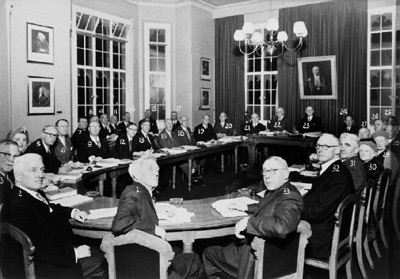Key 50: University of Melbourne Act 1923/Standing Committee of Convocation
Movements for reform which began early in the century finally bore fruit in a new University Act passed in 1923. This provided an increased annual endowment, provision for 'free places' at the University, a reformed council and reconstituted Senate. The unwieldy bi-cameral structure of Council and Senate ceased with the abolition of the Senate. It was replaced by a much weaker Standing Committee of Convocation of forty members for which all graduates were entitled to vote. The Council was enlarged from 23 to 32 members. Government appointments - first introduced after the Dickson Frauds and the Fink Royal Commission - were increased to eight (including four members of Parliament), elected professorial representatives to three, while graduates representatives were reduced to ten (no longer a majority). The addition of two members elected by the students and one by the teaching staff other than professors made the Council more widely representative (and more so than any other University Council in Australia). The hope that increased Government representation would attract more generous funding was not realised.

[Source: University of Melbourne Archives Image Catalogue, UMA-I-2702]